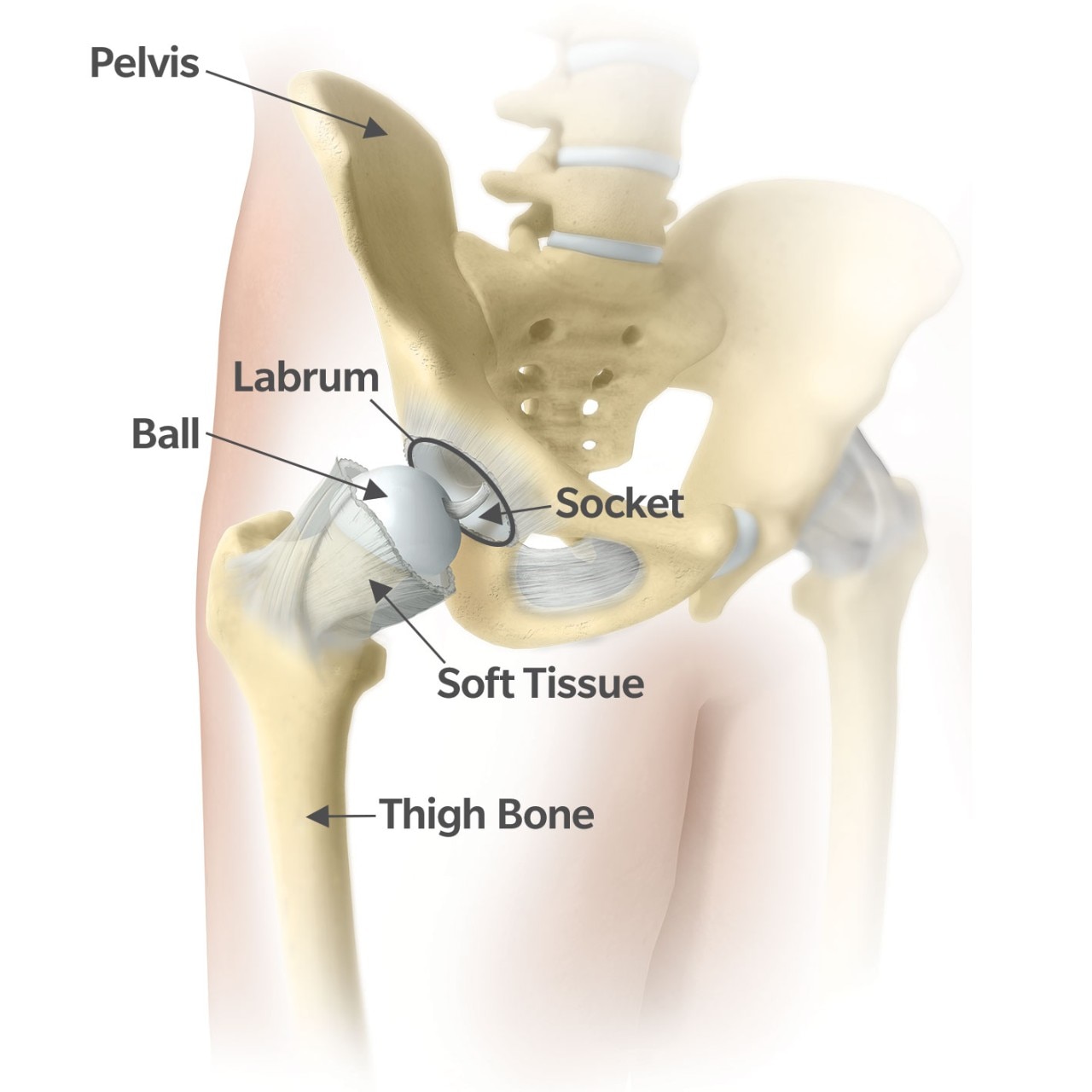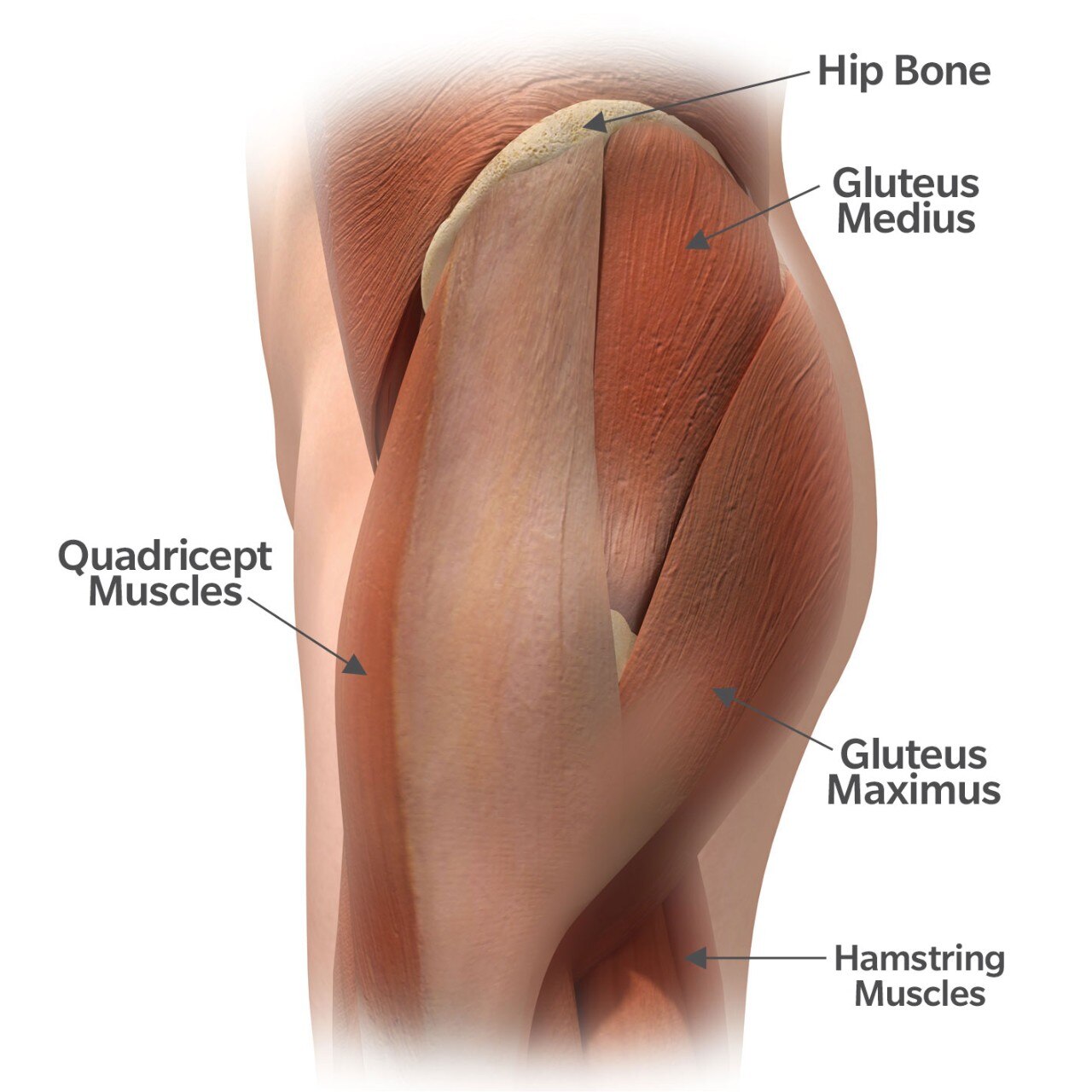Are you too young for hip pain?
After all, aren’t old people the ones who get hip arthritis? So then, why does your hip hurt when you wake up or when you go work out?
Perhaps it’s not constant pain, but a nagging pinch or clicking sensation that shows itself every time you get the motivation to get some exercise. As it turns out, there are plenty of things that can cause pain around your hip that don’t mean you’re just getting old. Identifying them can give you peace of mind and enough information can even provide you the ammunition you need to help improve the pain.
The hip has admittedly lagged behind other large joints in the body, like the shoulder and knee, when it comes to diagnosis and treatment of injuries. There are a few reasons for this… 1. It’s a very deep joint surrounded by thick layers of multiple muscles, tendons, and ligaments; 2. Portions of the joint can be difficult to reach using a scope (minimally invasive camera surgery); and 3. Imaging studies like MRIs are sometimes challenging to interpret.
A lot of research has gone into understanding the function of structures in the hip like the labrum, the capsule of the hip, and even misshaped bones of the ball and socket that can lead to pain and damage to the joint in patients as early as their teenage years.
The last two decades have brought about an immense wave of innovation in hip treatment that’s created a field called Hip Preservation. This contains a very broad range of treatments and philosophies that applies to essentially everything except undergoing a hip replacement surgery. Among them is a treatment called hip arthroscopy which, in my opinion, is a fantastic treatment option.
During an arthroscopic treatment, often called a scope, a small camera is inserted into the joint to allow surgeons to see and treat injuries. This treatment has propelled much of our understanding of non-arthritic hip pain.
For example, when the ball and socket are not perfectly round, they create painful and damaging friction that can tear the labrum of the hip and damage the cartilage that we need to have smooth motion. This is called femoroacetabular impingement, or FAI. Through the use of arthroscopy treatment, surgeons can now reshape these bones to make them fit better together and reduce abnormal friction. The ability to repair the labrum and reshape the ball and socket through a few 1-centimeter incisions has drastically advanced the treatment of hip pain in young, active individuals. Pain that used to be lumped into the basket of a hip strain now can be better defined and treated.
So how does someone know if their pain is coming from arthritis or an injury to one of these other structures? There are a few key clues that can help narrow down the diagnosis.

Pain in the ball and socket part of the hip usually presents as pain in the groin - the front part of the hip where the thigh meets the torso. Patients tend to think of their hip as the bony area on their side that they can feel - though other injuries can cause pain here - typically the ball and socket part of the hip cause pain or clicking in the front. Patients also often use their hand to grip the thumb and index finger around the hip to ‘grab’ the deep part of the hip where the pain is felt. This is called the ‘C-sign’ and is usually representative of a ball and socket issue of the hip.
The labrum is cartilage that attaches to the edge of the hip socket. It creates a seal around the ball portion of the joint. When the labrum tears, it can cause a clicking or popping in this area. Treatment for labral tears, FAI, and other like-injuries can be performed arthroscopically through small incisions.
Beyond the ball and socket, advances in treating structures all around the hip have come about over the past 10 to 20 years. In contrast to the ball, socket, cartilage, and labrum, there are a vast number of tendons and muscles outside of the actual hip joint that can become injured during normal day-to-day activities or sports.
You’ve likely heard of the rotator cuff in the shoulder and may even know someone who has had their rotator cuff repaired with surgery. Did you know that the hip also has its own group of muscles similar to the rotator cuff? The gluteus muscles look and function much like the rotator cuff. It’s no surprise that these muscles and tendons can become frayed or torn and cause pain.
When these are hurt, pain is usually felt on the side of the hip and thigh. Laying on your side can be very painful. In the past, this type of pain was mostly diagnosed as bursitis. Though bursitis can often be involved, there is much more to this area than just the bursa.
Initial treatment of injuries to these gluteal muscles, tendons, and bursa can often be Nonsteroidal anti-inflammatory drugs (NSAIDs), massage, stretching, and sometimes even injections to relieve the pain. If issues persist, and advanced imaging shows structural damage, minimally invasive arthroscopic surgery can be used to repair the gluteal tendons - the rotator cuff of the hip - to restore function and help improve pain.
It’s worth mentioning that most true hip joint injuries do not cause pain in the muscles and tissues of the backside of the hip (buttock). Pain in this area, combined with low back pain, should usually trigger an evaluation of the spine as the pain can often be referred by the nerves of the lower back. Because the hip and low back are very close, it’s sometimes challenging to differentiate injuries between the two and often both can be involved in some combination.
However, some buttock muscles can cause pain, like the large gluteus maximus muscle, multiple small deep muscles, and even the hamstring muscles where they originate on the pelvis (in a spot many patients call the ‘sit-bone’). The sciatic nerve, one of the largest nerves in the body, passes through this area also and can sometimes be involved. Your orthopedist is well equipped to help you sort out what’s at the root of the issue and find the best treatment course.

So, if you feel you are too young to be having hip pain - think again.
Oftentimes, our active lifestyles are enough to put strain on and injure many structures around the hip joint. Other times, the way your hip joint is shaped can cause some of the pain - and that’s simply not your fault!
Having hip pain doesn’t always have to compromise your ability to live a healthy active lifestyle. If simple home treatments like stretching, anti-inflammatory medication, massage, and rest don’t help, talk to your doctor about seeing a hip preservation specialist to determine what solutions may exist.
Who knows - relief may be just around the corner!



